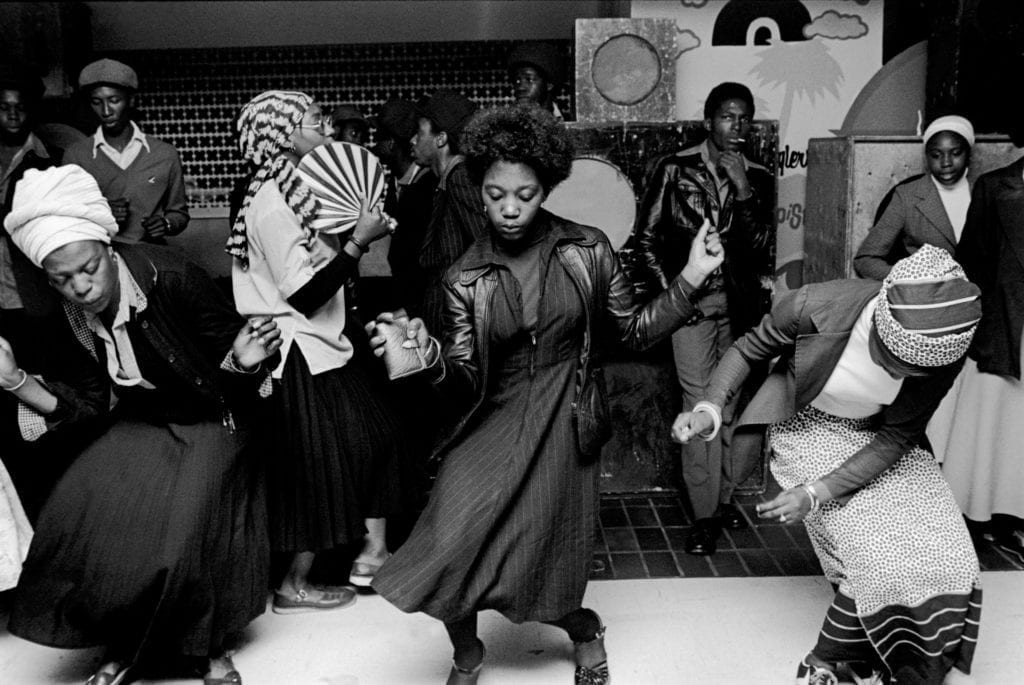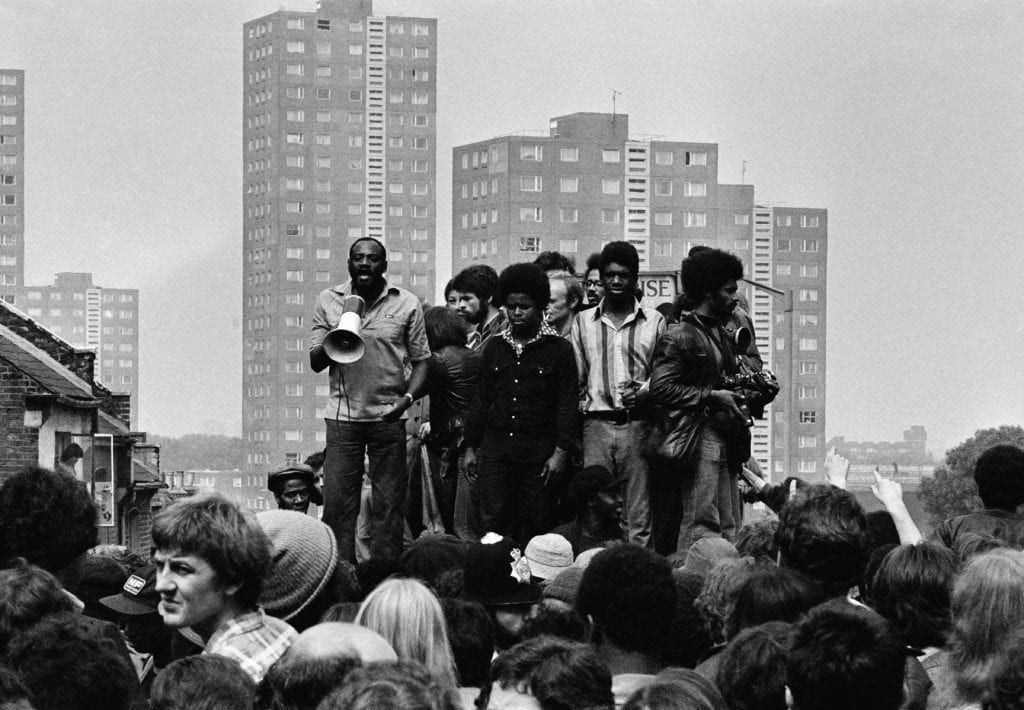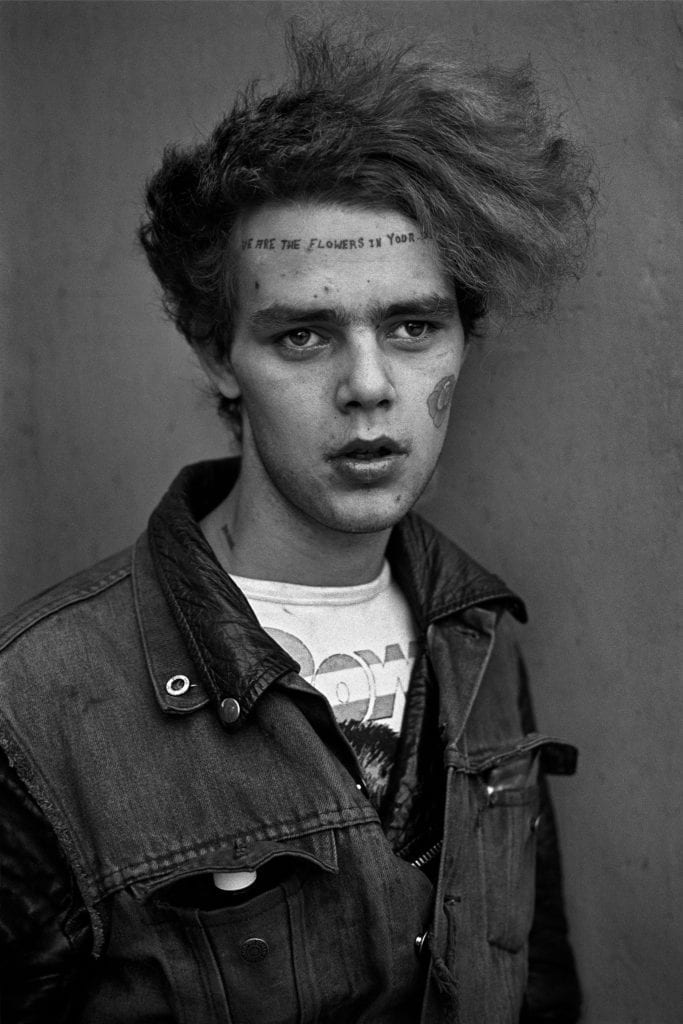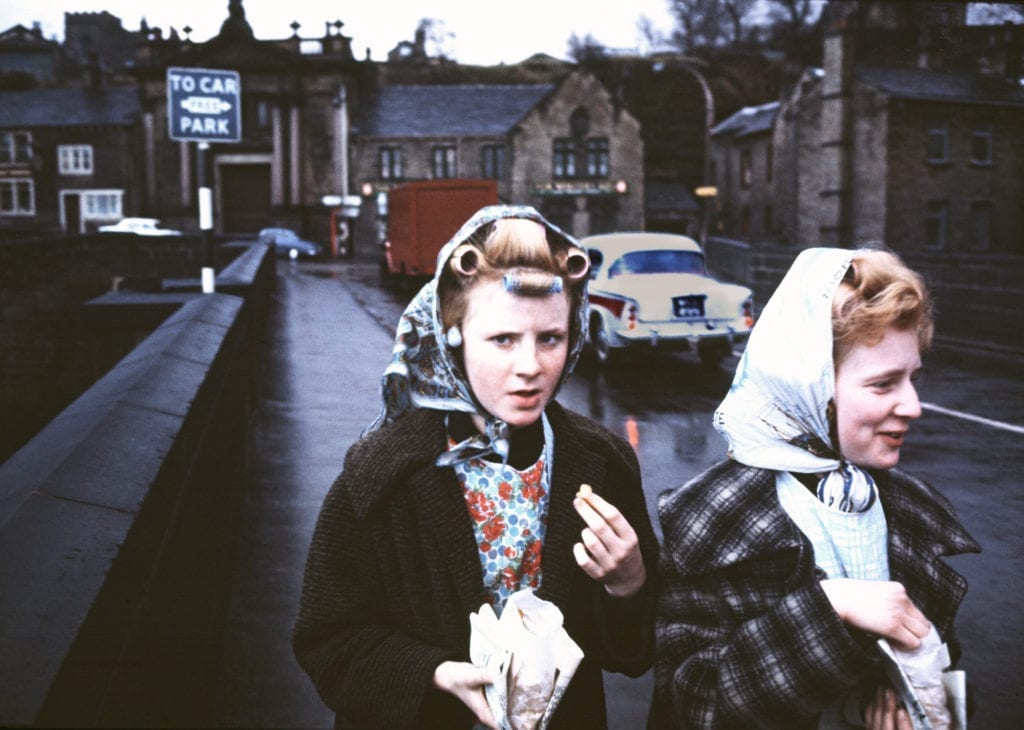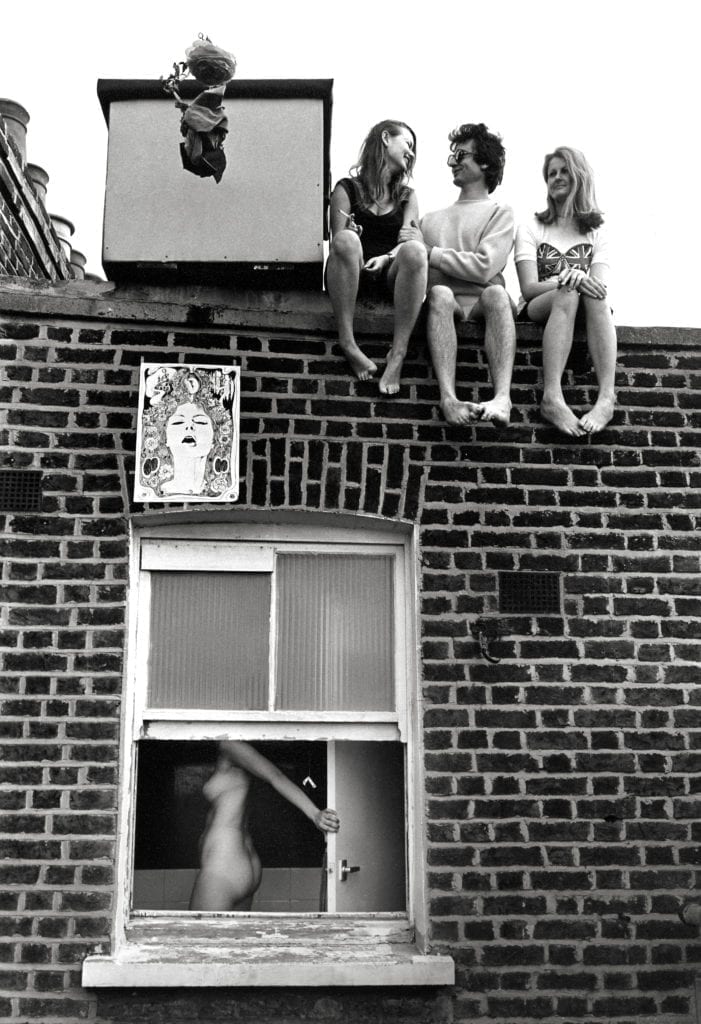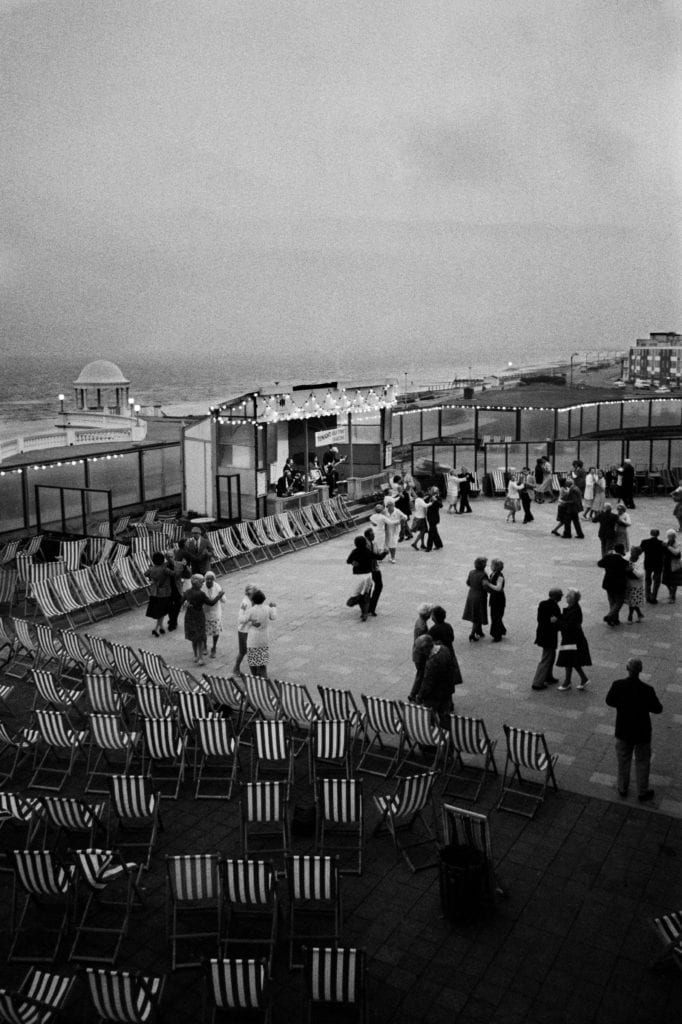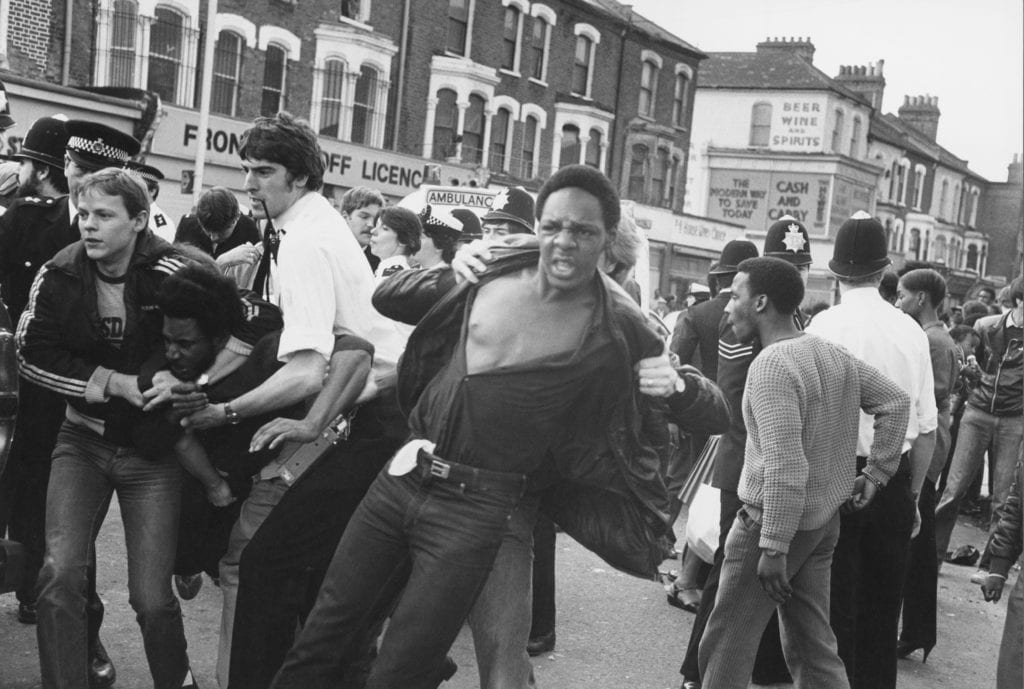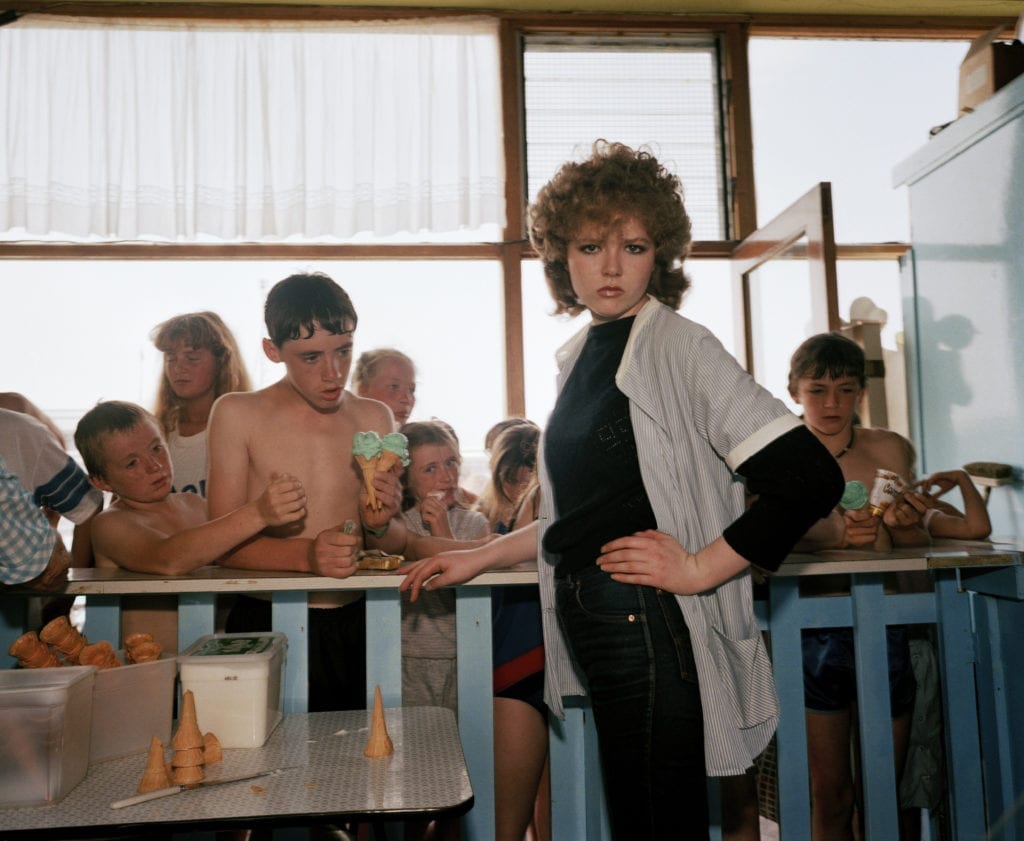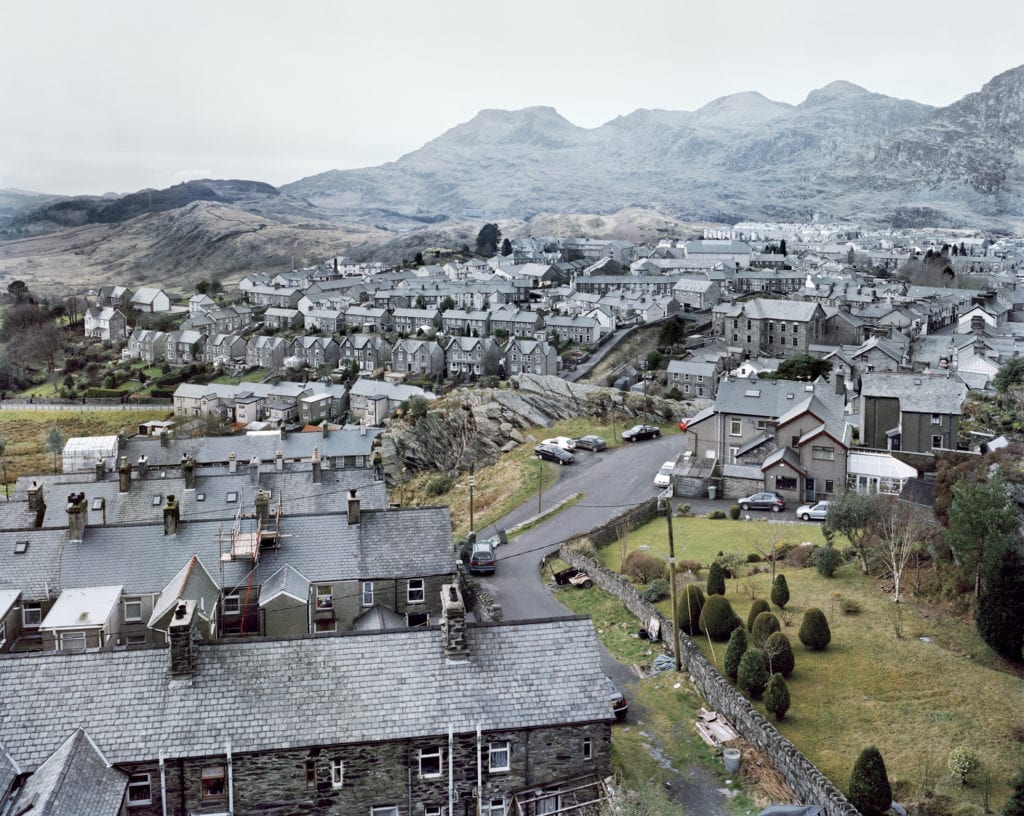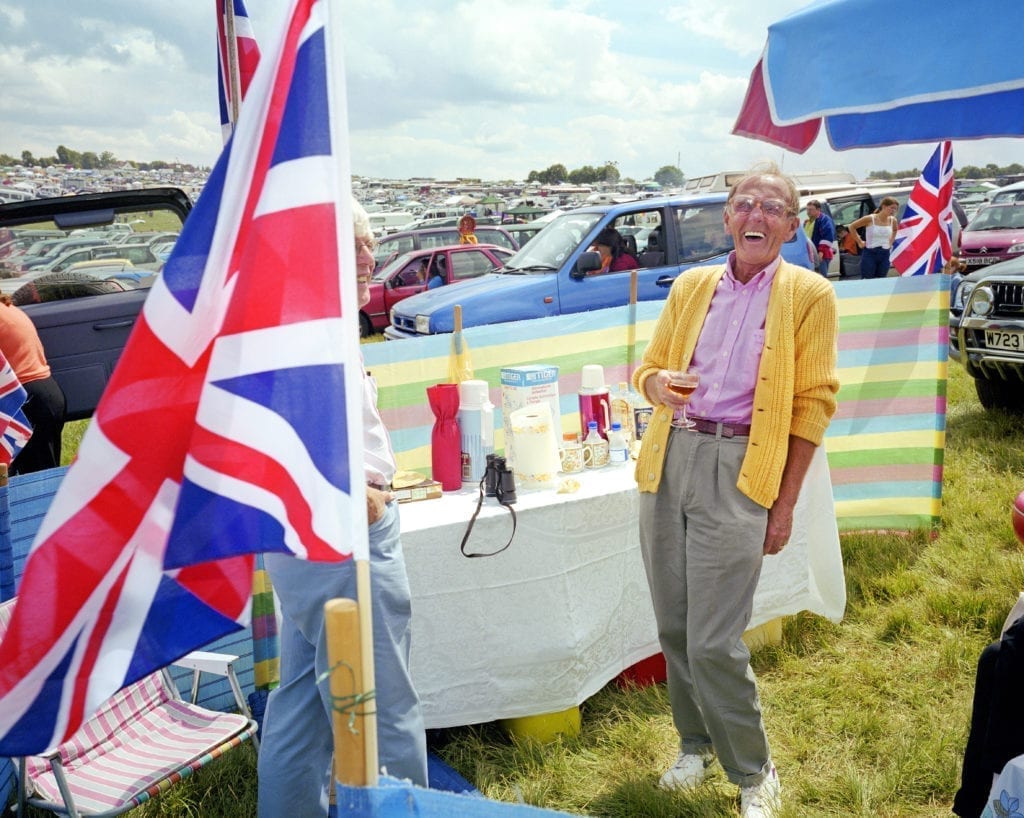The earliest photographs in the new exhibition at Beetles and Huxley gallery, London, are Bill Brandt’s and E.O. Hoppé’s studies of Britain’s interwar period, showing the idiosyncrasies of the British classes of the time, depicting miners, maids and gentlemen in their homes, on the streets, at work and leisure.Wolverhampton Disco, England, 1978 © Chris Steele-Perkins / Magnum Photos Darcus Howe (with loudhailer) addresses a crowd from on top of a toilet block, 1977 © Syd Shelton Tuinol Barry, Kings Road, London, 1983, © Derek Ridgers Mill Girls, Elland, Yorkshire, 1965 © John Bulmer No Loss Of Face, Earl’s Court, London, 1960 © Frank Habicht GB. England. East Sussex. Bexhill on Sea. De La Warr Pavilion. 1978 © Martin Parr First Arrests Outside Front Line Off License, Railton Road, Brixton, April 1981 © Neil Libbert Untitled (Girl Serving Ice Cream), Brighton, 1983-85 © Martin Parr/Magnum Blaenau Ffestiniog, Gwynedd, Wales, 2008 © James Morris Picnic In The Car Park On Derby Day At Epsom Downs Racecourse, June 2001 © Peter Dench An Ideal for Living, Photographing Class, Culture and Identity in Modern Britain, is on show at Beetles and Huxley gallery, London, from 27 July – 17 September 2016. More information is available here .
